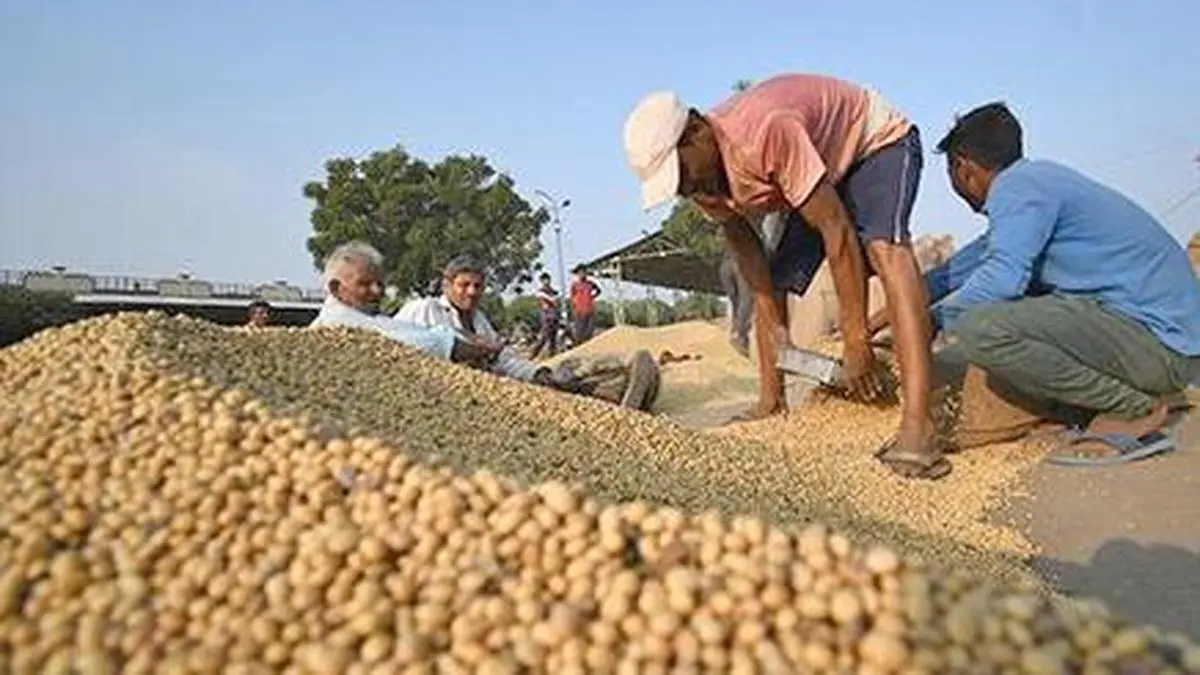Global agricultural commodity markets are heading into 2026 with relatively subdued prices but elevated geopolitical risk, as the US-China rivalry reshapes trade flows, production incentives, and market fundamentals, according to Rabobank’s Agri Commodity Markets Outlook 2026.
The report argues that agricultural markets have moved from being driven primarily by supply-demand cycles to becoming “pawns” in a broader strategic contest between Washington and Beijing. This is resulting in tariffs, subsidy races, export controls and policy-driven distortions that are influencing everything from acreage decisions in the US Midwest to palm oil output in Indonesia.
For India — a major importer of edible oils and pulses, but also a leading exporter of sugar, rice, spices and some oilmeals — these global shifts create both opportunities and risks.
Subdued prices
Rabobank expects global grain and oilseed supplies to stay comfortable through 2026, keeping price volatility low unless disrupted by weather or geopolitics.
Large US corn plantings, record crops in Brazil and recovering wheat production in Europe are expected to anchor prices. But markets will remain sensitive to sudden moves on tariffs, export restrictions and commodity-specific policy changes.
For India, this translates to stable import costs for key commodities like edible oils and pulses, providing some relief to the inflation-sensitive food basket. However, trade-policy shocks — such as abrupt export bans by suppliers or tariff hikes by major buyers — could still disrupt domestic markets.
Relying on La Nina
The global wheat market posted its first surplus in six years in 2025-26, thanks to favourable weather in the EU, the UK and North America. Rabobank expects a mild deficit in 2026-27, but no dramatic tightening unless La Nina turns severe.
India, by contrast, continues to face a structurally tight domestic wheat balance due to multi-year production shortfalls and rising consumption. While global prices staying subdued may help India import selectively if needed, trade flows remain limited due to food security sensitivities, elevated MSPs and periodic export bans.
Any sharp rise in global prices — triggered by weather shocks in the US or Black Sea region — could complicate India’s price management.
Biofuel policies impact
The report highlights that US biofuel policies, particularly renewable diesel mandates, will continue to push soyoil demand higher, shifting crush economics and increasing soymeal surplus pressures.
Meanwhile, palm oil markets are set to remain tight in 2026 due to Indonesia’s B40 biodiesel mandate and soft oil supply constraints. Rabobank expects average palm oil prices to rise nearly 7 per cent year-on-year (y-o-y). For India, the world’s largest importer of edible oils, this has several implications — palm oil imports may get costlier in 2026; stronger demand from China could heighten competition for Malaysian and Indonesian cargoes; any delay in India’s own biodiesel programmes means domestic producers won’t fully benefit from global biofuel-driven demand; a tighter global palm oil market will keep India’s edible oil inflation prone to supply-side shocks.
India has been diversifying supplies, sourcing crude palm oil from Indonesia and Malaysia, sunflower oil from Russia and Ukraine, and soybean oil from South America. But global policy shifts will still directly influence domestic prices.
Sugar surplus
Rabobank expects the global sugar market to shift into a 2.6-million tonne surplus in 2025/26, driven by bigger crops in Brazil, India and Thailand. This is likely to pressure international prices through 2026.
For India, this is significant because the country’s 2025 monsoon was 8 per cent above normal, raising prospects for a better cane crop in 2025/26. Higher domestic output could allow limited sugar exports, depending on government approvals. However, global surpluses mean export realisations will remain capped.
On the biofuel side, Brazil’s higher ethanol mandate and potential stock drawdowns could influence global trade arbitrage, indirectly affecting India’s ethanol blending rollout and its link with sugar diversion policies.
Cocoa may ease
Cocoa prices, which surged to historic highs in 2024-25, are expected to ease as production rebounds in West Africa and Latin America. Coffee markets will remain volatile in the near term, but Rabobank expects a first significant global surplus in 2026/27.
India, as a major importer of cocoa products and a producer-exporter of coffee, stands to benefit from the following — cheaper cocoa imports in late 2026 could ease cost pressures for India’s chocolate and confectionery industries; volatile global coffee prices may create trading opportunities for Indian exporters; the EU Deforestation Regulation (EUDR) could shift demand toward Indian coffee, which has a relatively favourable compliance profile compared with Brazil and Vietnam.
India shielded from some risks
The global macro picture remains fragile with US growth slowing to around 1.5 per cent in 2025 and 0.9 per cent in 2026, China’s growth moderating to 4.2 per cent in 2026 amid structural headwinds, long-term interest rates remaining elevated globally, currency markets may see volatility as the US Fed leadership changes.
India, by comparison, remains a bright spot with steady domestic demand and relatively insulated food-supply chains. But it is exposed to global commodity volatility through edible oil imports, fertilizer imports, pulses supplies, energy-linked inflation and export curbs by major producers. Any renewed disruptions in the Red Sea or Black Sea could have outsized effects on India’s import costs.
Stable prices, unstable politics
The Rabobank report concludes that while agricultural markets are well supplied going into 2026, the “unprecedented frequency of unprecedented events” means the biggest risks are no longer agronomic — they are geopolitical.
For India, the global context provides a period of relative price stability but demands sustained vigilance on edible oil procurement, sugar trade decisions, wheat reserves and compliance with emerging regulatory regimes such as the EUDR norms.
Published on November 14, 2025
